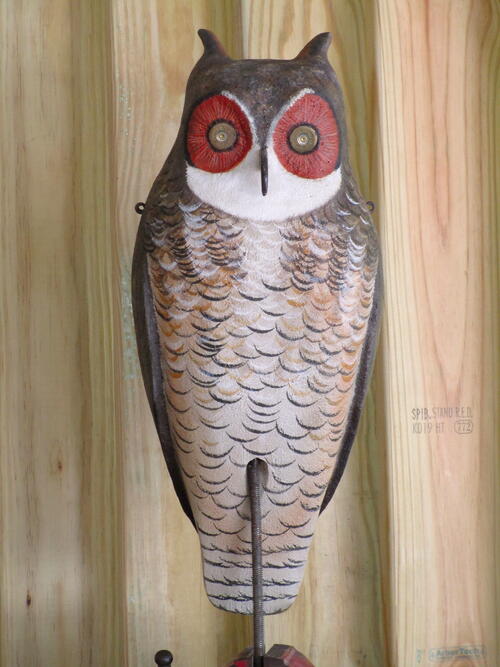A Real Corker

It is always fun to make gunning decoys. So, with the decline of waterfowl on the East Coast, I decided to pursue another bird with decoys. A few years ago, I wrote an article for Wildfowl Carving Magazine on making crow decoys. Well, after hunting crows for several years, I noticed that I could use some confidence decoys for this hobby. So, I decided to carve a great horned owl decoy.
It’s well known that crows despise birds of prey. So, I started doing research into owl decoys. Looking atdecoys from the past seems to help with deciding on what size and style of owl to make. Remember, when you’re building a rig of decoys, you must make several decisions, including how you are going to use the decoy and how you’re going to get it to the hunting area.
I discovered that there are a lot of funky-looking owl decoys out there. Yes, I also know that many companies out there make plastic decoys. After looking at them, I really didn’t like the paint jobs. The owl decoy I made here was modeled after a Herter’s owl decoy. It is a sim-ple owl decoy made for the field—you can hang it in a tree or stick it in a field edge. Put out your crow spread, turn on your call, and wait for the crows to show up. The material I plan on using is high-density cork—pieces I had left over from other projects. Herter’s owls were made from balsa and covered with a stucco, but I didn’t have that much balsa. I know the ear tufts will be sticking up, so I use white pine there. Also, since this decoy is going to be used in the field, I went with the shotgun shell eyes and the bear claw beak.



